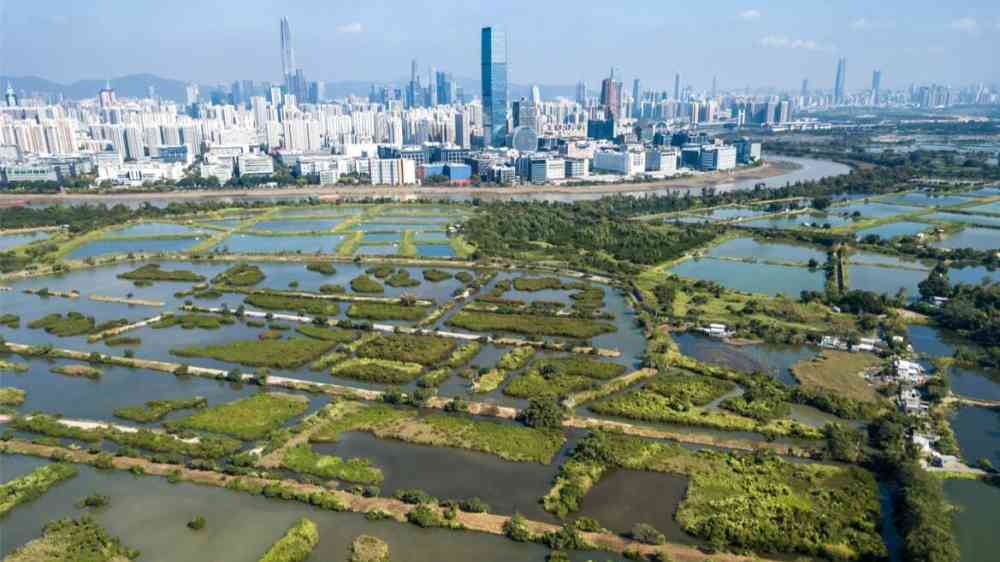
Climate change is forcing people to adapt to changing environmental conditions. But what really makes the difference is how they do it. The recently published Hamburg Climate Futures Outlook 2024 by 73 authors shows that, in the long run, only sustainable adaptation can succeed. This global assessment by University of Hamburg's Cluster of Excellence Climate, Climatic Change, and Society (CLICCS), to which scientists from the Max Planck Institute for Meteorology contributed, also provides practical recommendations.
"Successfully adapting to the impacts of climate change is just as difficult and challenging as reducing emissions of every kind," says Anita Engels, Professor of Sociology and leading author of the assessment. "Yet, both are needed."
On the basis of nine case studies in diverse geographical contexts, including Nepal, Namibia, Lower Saxony (Germany), São Paulo, Ho Chi Minh City, Hamburg, North Frisia (Germany), Taiwan, and the Maldives, CLICCS researchers have analyzed a broad range of adaptation measures in response to climate risks. None of the cases assessed can currently be regarded as exemplifying a sustainable adaptation strategy. However, Hamburg, North Frisia, and Ho Chi Minh City were able to demonstrate initial approaches to transformative adaptation. The research teams, which included people from the contexts under investigation, furthermore identified key conditions for sustainable climate adaptation.
Developing sustainable measures together with the local populace
"Sustainability is not just a 'nice-to-have'", says Beate Ratter, Professor of Geography and author of the assessment. "When adaptation isn't sufficiently thought through, the side-effects can cancel out the successes." For example, poorly chosen coastal protection measures might help combat flooding but can, in the long run, lead to the loss of stabilizing sediments or harm sheltering coral reefs. Similarly, forests that are restored with monocultures are especially vulnerable to pest infestations and fires. The study assesses the quality of adaptation measures in three categories. The first stage involves direct responses to crises like flooding or drought (coping). The measures in the second stage are more forward-thinking. Preventive adaptation measures are pursued step by step in order to avoid or mitigate negative climate impacts in the near future (incremental). The third stage, sustainable adaptation, calls for redefining structures and processes - a transformation. These measures produce long-term effects, reduce risks, and are jointly shaped and implemented by the local populace (transformative). They produce as few additional emissions as possible and are oriented on the UN's Sustainable Development Goals (SDGs), so as not to do harm elsewhere. For instance, they preserve biodiversity and conserve natural resources.
Climate variability and climate change can add up
Adaptation is urgently needed because the combination of climate change and natural climate variability is already having pronounced effects on ecosystems and economies, as the latest CLICCS climate simulations show. "In the future, extreme weather events could also occur in combination or clusters," says climate researcher Prof. Jochem Marotzke, Director at the Max Planck Institute for Meteorology and one of the authors. "That means greater risk with potentially devastating effects. We need to take measures to prepare as soon as possible."
At the same time, CO2 emissions need to be rapidly and consistently reduced. But the world is making little headway. Back in 2021, CLICCS first identified the ten key social drivers relevant in this regard. Three in particular are currently standing in the way of meeting the targets set out in the Paris Agreement: corporate strategies, consumer trends, and insufficient divestment, that is, insufficient withdrawal of investments in fossil fuels. "Once again, we're seeing massive investments in oil, gas, and coal," says Anita Engels. "But the financial betting would have to point in another direction. Investors would have to be convinced that, in the long run, their investments in fossil fuels just don't pay off anymore." Here, the only remedy consists of legally binding regulations and political conditions established by individual countries and in connection with the United Nations negotiations on climate change.
Turning up the pressure to turn away from fossil fuels
What can individual societies do? According to the analysis, social movements can push political decision-makers and companies to set more ambitious climate targets - through support or pressure. Emitters also need quantifiable goals and clear obligations to reduce greenhouse gases, which in turn are implemented and monitored. Only then can the urgently needed qualitative leap in climate protection be achieved. Climate litigation can initiate and accelerate these processes. Further, when societies achieve a higher level of social justice, this increases their chances of successfully implementing climate protection and adaptation alike. Lastly, corresponding strategies should be developed together with the local populace, as their local knowledge, experience, and commitment can substantially contribute to the measures' success.